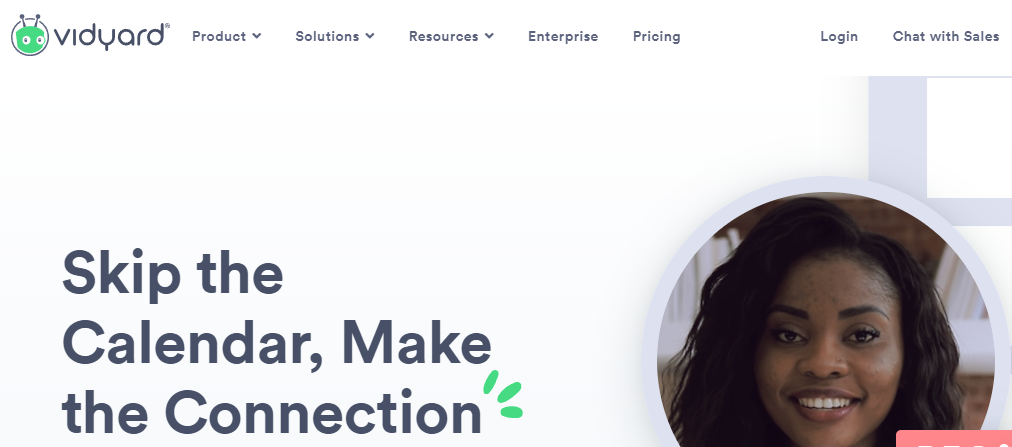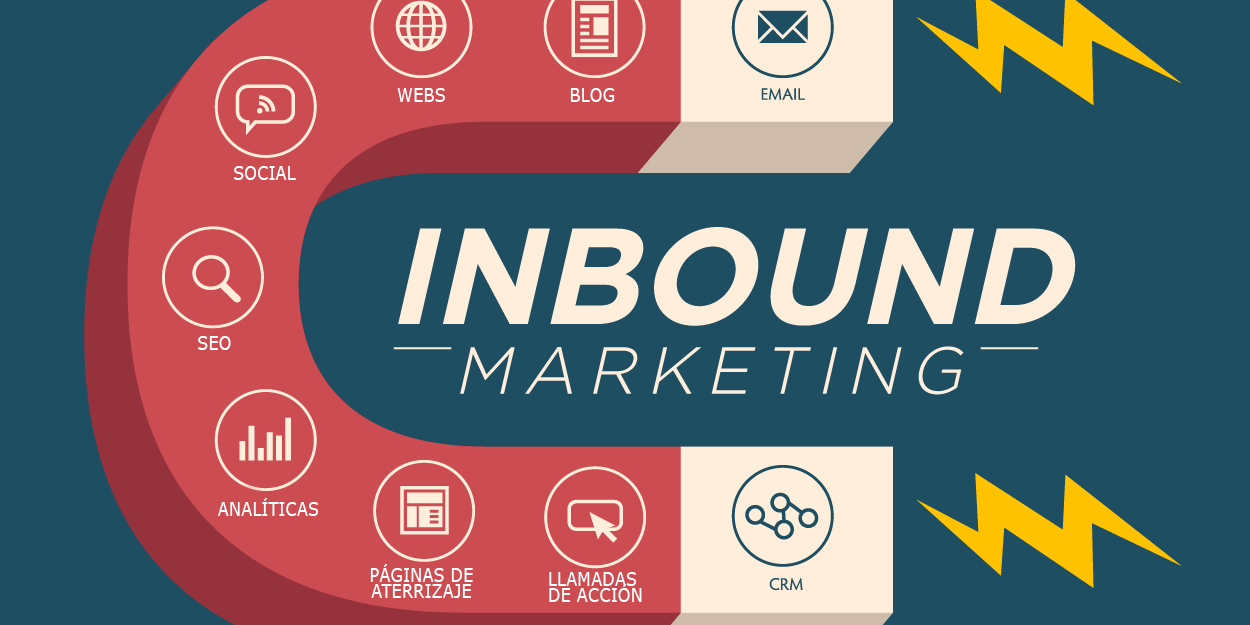In this day of data-driven marketing, marketers are constantly competing to get the attention of prospective customers. Due to this, businesses who want to achieve the best R.O.I. for their marketing efforts must focus on high-value accounts while taking the level of penetration in their accounts, their branding, and marketing penetration at the forefront. To achieve their objectives, marketing teams need to implement strategies that blend sales and marketing skills to find, connect with, and conclude deals with accounts of high value that are most important. That is where Account-based marketing (A.B.M) comes in. Account-based marketing is a targeted method of B2B marketing where sales and marketing teams collaborate to identify the most appropriate accounts and convert the accounts into customers. Keep reading this article to learn more about A.B.M.
Table of Contents
ToggleWhat exactly is A.B.M?
In this age of technology, where everything and everyone is connected, new and ever-changing methods and strategies let marketers connect with their customers on an entirely new level. However, this new frontier may have some issues. We work through an ever-growing amount of information, higher customer expectations, and the struggle to get heard by an array of rivals. To meet their objectives, many businesses seeking high-value clients often find the A.B.M. strategy is more effective than casting a wider internet.
Account-based marketing isn’t an original concept, but it has recently gotten revived due to changing technology and an evolving landscape. Implementing the A.B.M. strategy can improve marketing R.O.I., increase the attributed revenue, boost leads and conversions, and help connect sales with marketing.
The general rule is that B2B marketing professionals tend to focus on tips to reach the most companies possible, but it doesn’t bring the greatest return on investment. In the past, it was challenging and costly to increase the size of A.B.M. initiatives. It was because of the amount of personalization that it demands.
With today’s modern and improved technology, it’s becoming easier and less expensive to expand A.B.M. to many businesses, and marketers from all over are adopting A.B.M. strategies within their teams. A.B.M. plan within the groups to achieve better results. Marketing is no longer a one-way street–you cannot simply shove promotions to your prospects. You need to engage in an active dialogue, and A.B.M. lets you do all of that with unparalleled precision.
Terminus
A.B.M. platforms such as Terminus can help sales, marketing, and customer success teams collaborate more effectively to develop an effective go-to-market strategy that results in an outstanding customer experience. Terminus gives you the best channels, data, and analytics in one place so that you can design, execute and evaluate your A.B.M. strategy from one location.
Common issues that A.B.M. may address
A broad-based marketing strategy might seem sensible initially in the B2B market, however, it can dramatically lower your R.O.I. compared to a more targeted approach. Successful A.B.M. programs can increase revenue, increase efficiency and offer in-depth data that are otherwise unavailable.
1. Able to demonstrate a clear R.O.I
One of the primary objectives of account-based marketing will be to prioritize R.O.I., which results in clear business outcomes. Compared to other marketing strategies and strategies, the 2014 I.T.S.M.A. an account-based marketing survey concluded that any B2B marketing approach or tactic, A.B.M. gives the maximum return on investment.
2. Save lots of time, staff, or budget-related resources
Since account-based marketing focuses on spending time on lucrative, high-value accounts, it helps marketers focus on their strengths and create marketing plans specifically designed to target specific accounts.
3. Increases engagement with the users
Since account-based marketing is so individualized and targeted, customers are likely to be more inclined to participate in the content. Since it is tailored to the specific needs, the company, and the particular customer journey stage, customers tend to be more inclined to engage.
4. Helps with your goals and what metrics you should track
Account-based marketing allows you to assess the efficacy of your marketing campaigns as you’re measuring a smaller number of targeted accounts concerning ads, email websites, events, and the web. The information you gather is also more specific and will provide insights you would not be able to collect otherwise.
5. Helps synchronize sales and marketing teams

If your marketing and sales teams aren’t synching, A.B.M. is one of the most effective methods to ensure that they are on the same team. A.B.M. functions similarly to sales, placing sales and marketing teams in the same mindset so that they both think in terms of accounts and how to reach them, get them together, and then close the deal.
Components of A.B.M
Account-based marketing involves targeting engagement, engagement, as well as measurement. Integrate these components into the core of your plan, and you’ll ensure that your marketing team is set to be successful.
1. The art of identifying and managing the most profitable account
ABM can utilize technology to pinpoint and manage accounts worthy of your time and provide the most return on investment. It allows you to centralize the management and targeting of funds instead of working and syncing lists of accounts among several applications. The kind of accounts you choose to target is contingent upon your company. The following criteria are the best, to begin with high yield, product-specific fit, quick wins, strategic importance, competition, and the territory.
2. Interacting with multiple channels
Design and run coordinated, customized campaigns across all of your marketing channels using an integrated platform, rather than managing each channel separately. It requires an account-based solution that connects every channel and allows you to create complete and well-informed cross-channel campaigns for the accounts you want to target.
3. Optimizing and measuring strategies
Your A.B.M. strategy should be quantifiable to prove your strategy’s effectiveness and growth over time. It would be best if you looked for a solution that will allow you to create dashboards for your account that analyze particular reports, programs, and targets and provide coherent data on account revenue-based analytics in one spot.
4. Inbound Marketing- Account-Based Marketing

Inbound is the basis for a solid A.B.M. strategy, allowing targeted and efficient allocation of resources of accounts with high value. Here are a few additional reasons to adopt Account-Based Marketing and Inbound Marketing within your business:
Inbound marketing assists you in attracting the right customers, and A.B.M. boosts its flywheel to help you make them happy and win over the customers with an exceptional customer experience.
A.B.M. can be built upon inbound, providing an efficient and precise allocation of resources of accounts with high value. By combining these methods, you can reach a broader range of customers than with just one approach.
Your content can have a double benefit — you could create and utilize content that you can use for both an A.B.M. and an inbound approach (e.g. make a customized case study to target a particular account that you can also post on your site).
5. Return on investment of a lead generation program

The return on investment of a successful lead generation strategy depends on identifying qualified leads and then getting them through in the sales funnel at their speed.
A.B.M. is a powerful tool that increases R.O.I. According to Alterra Group, most marketing professionals (97%) realized more significant R.O.I. using A.B.M. than any other strategy for marketing.
A.B.M. is more effective than other marketing strategies. The majority of marketers believe account-based strategies for marketing outperform different marketing investment strategies.
A.B.M. leads to more outstanding sales. Marketing generates 208 percent more revenue for companies that have integrated their marketing and sales teams.
Simple steps for a better ABM
Implementing, planning, and optimizing your program is the foundation of an effective A.B.M. plan. When you have established your goals, your sales and marketing teams will be able to design and execute individualized campaigns using the appropriate channels to get the best outcome. Below listed steps will help you with this:
1. Find and categorize your high-value accounts
Use all the data on firmographics and business intelligence you discover to help you determine and prioritize your top-value accounts. Consider revenue potential and other strategic factors like the influence of market forces, the likelihood to repeat purchases, and the possibility of more significant than average profits.
2. Create a map of accounts and identify essential individuals within the company
Identify how your account targets are organized, how decisions are taken, and who the key decision-makers and influencers are.
3. Define content and customize messages
An efficient A.B.M. initiative uses valuable content that addresses specific and critical business issues that the account in question is facing. Look at how your message and content will be tailored to the particular needs of the target account. Issues.
4. Identify the most effective methods
Communicate with your customers via their mobile, web, and email channels. Think about which channels are most effective for specific jobs or industries you may be targeting, and consider aspects like opt-in regulations and other restrictions within your particular region.
5. Implement a focused and coordinated marketing campaign
It’s crucial to organize your campaigns across all channels and coordinate sales and marketing efforts teams to maximize effectiveness. Modern technology lets marketers organize and manage A.B.M. campaigns on a larger scale and with greater efficiency than before.
6. Test, and measure. Learn, test, and improve
Be sure to evaluate, test and optimize your A.B.M. marketing strategies to ensure they’re efficient and will always increase. It is essential to assess the results of your campaigns and patterns at an account level and aggregate (all account types) to gain an even more detailed view.
Account-Based Marketing strategy to make maximum benefit
For the account-based approach to marketing, you’ll need a well-thought-out strategy put in place. Follow these steps to formulate and implement a solid account-based marketing plan.
1. Find alignment between your marketing and sales teams
The alignment of sales and marketing is essential for the successful implementation of account-based marketing. To provide an experience that is unique to the buyer, the customer needs to go through a smooth transition from the moment they are acquired as a lead to the sale.
To increase synergy between sales and sales companies, companies must be committed to clear communication and find a compromise that will ensure that the marketing team has leads that the sales team can effectively sell to.
If you’re starting with A.B.M., beginning with a smaller task force of a salesperson and one marketer who can identify and market to targeted accounts is adequate. As you grow, increase the importance of having your marketing team assist additional salespeople since one marketer is typically connected to more than ten salespeople. Each salesperson can manage at least ten customers.
2. Conduct research to find out who your account is for
Once sales and marketing have agreed on their strategy and approach, they can collaborate to ensure that your company is targeting appropriate account types.
It typically begins with a thorough investigation to determine the accounts to target. In deciding the customer personas to use an account-based marketing strategy, Marketers must consider:
- The vision, mission, and goals of the business of their ideal client.
- If there are any high-value clients in the process of engaging using your company’s Inbound strategy.
- The present state of a maturing business, company size, and growth potential.
- Revenue model and spending patterns.
- The platforms and tools that their ideal client is using.
There are numerous ways to find critical accounts; what’s crucial is that sales and marketing are in agreement on the changes they want to focus on.
Based on HubSpot Academy professor Kyle Jepson, “If your marketing is targeting one list of companies, and your salespeople are working a different list, you’re going to end up with an account-based mess.”
3. Create account plans
Once you’ve identified the accounts that should be targeted, it’s now time to develop a plan for each account. It requires that sales and marketing teams collaborate to identify the potential prospects they’ll need to get their performances in front of them and what kind they’ll have to create to connect with the group of people.
When creating an account strategy to implement your A.B.M. strategy, be sure to keep these guidelines in your mind:
- Although plans for accounts of different customers may have similarities, they must be customized to meet the particular needs of that account.
- Each account plan should be able to answer the two following questions: who is part of the decision to purchase for this purchase (e.g. decision-maker, influencer, Legal, blockers, end-users)? What is the content required by every member of the buying committee?
4. Contacts that are associated with the account targets
The ideal approach is to use the Inbound method that will allow you to draw in contacts that are associated with your desired accounts. If you require more communication, the first step should be to identify the areas where your ideal customers are likely to locate solutions to the issues you provide and ensure that your business is well-known and present in these areas.
Opportunities to be in contact with contacts include occasions, industry publications like newsletters and blogs, and targeted advertising placements. While it’s tempting to attempt to gain exposure for your business through every avenue, you should focus on those channels that are the most relevant to your intended accounts and your contacts.
5. Engage the buying committee
When you establish connections with your most influential people, ensure that marketing and sales actively engage with everyone who will be a part of the purchase decision.
While sales usually drive this part of the purchasing process, marketing should be prepared to help with relevant material to strengthen the message.
To assess the effectiveness of an A.B.M. strategy, the marketing and sales teams may use the following measures:
- Identify the buyers connected to account targets and monitor interactions with them.
- Information points related to the quality of the deal – creation date, velocity, and closing rate.
- Revenues attributed to accounts of the target.
Once the plan is in place, you have this strategy in place, and your sales and marketing teams can replicate the procedure with both existing and new important accounts to draw and keep high-value customers.
Examples of account-based marketing based on accounts:
Account-based marketing starts by making meaningful segments. And finding marketing strategies that can be customized to these segments via the channels most effective for them (events websites, events, emails). Every company’s design is unique and will use its unique combination of strategies.
Your strategy for targeting an individual account will be based on the particular characteristics of the account- its relevant segments for performance, and its appropriate marketing channels. The details you select to establish your A.B.M. programs around will be those that will bring the most value to your business.
Also read: 9 Youtube Marketing Strategies For E-commerce Companies
Here are some real-world examples of the methods B2B marketers can create account-based marketing programs:
1. Events- Account-Based Marketing
In-person meetings have always been among the most compelling opportunities sales representatives have to convince decision-makers. A more effective A.B.M. strategy for events may include:
- Personal invitations to prospective customers from targeted accounts.
- V.I.P. dinners.
- Personalized presents and schwag specifically for reports targeted and a customized follow-up following the event.
2. Webinars- Account-Based Marketing

Like events, Webinars can be adapted to be timely and relevant to a particular target audience. Webinars and follow-up sessions can be tailored to specific companies, and exclusive webinar content may be developed with the intended group in mind.
3. Direct mail- Account-Based Marketing
In this day and age where everyone is drowning in emails, Direct mail has been a way to contact potential customers within a business. Because A.B.M. is more specific and marketing and gifts delivered by direct mail may be more valuable since the earnings potential is more lucrative.
4. Email campaigns

Despite the increasingly widespread use in direct marketing, it remains a viable marketing channel that can be used for A.B.M. While a volume-based approach to marketing could employ templates and automated marketing, account-based marketing is creating custom emails for each business and each individual.
5. Paid-for advertising- Account Based Marketing

P.P.C. or paid social media advertisements are the most common method to reach out to specific accounts on the internet. Social media platforms like LinkedIn and Facebook allow you to concentrate on particular companies and individuals using technologies like I.P. targeting and retargeting; your advertising campaigns can target a small number of targeted accounts instead of a broad net.
6. Web personalization

A.B.M. campaigns on the internet do not stop driving visitors to your site through personalization SEO or outbound advertising. When visitors arrive on the site, website personalization technology is a way to provide a customized user experience that is specific to the account of customers versus the standard web-based expertise.
Personalization of web pages for A.B.M. is achieved by using firmographic data, usually obtained via reverse I.P. lookup, or by using third-party or first-party data to track your website’s anonymous users. After the user’s business is determined, they will be linked to your desired account to give users an experience on your website that is personalized.
There are many aspects of a website that could be customized using account-based personalization, which includes messages, images, calls-to-action, and social proof.
Account-Based Marketing Tactics (F.A.Q.s)
Below are some commonly asked questions as well as their answers regarding account-based marketing strategies:
1. Why is Account-Based Marketing Important?
Account-based marketing has become an income strategy for all your team members. A.B.M. was once a buzzword and a new kind of marketing strategy; A.B.M. is rapidly becoming the preferred method for sales, marketing, and customer service teams to collaborate to generate revenue for the entire funnel.
2. How is Account-Based Marketing Implemented?
A.B.M. may be intimidating to those who aren’t familiar with the concept. However, it doesn’t have to be. This is why the T.E.A.M. Framework comes into play, or Target Engage, Activate, and Monitor. It’s a straightforward method for teams to consider the best way to design, implement and analyze their go-to-market campaigns. They can also effectively communicate their successes throughout the group and the entire company.
Also Read: SEO Content Writing: Relation Between SEO And Content Writing
Top choices for Account-Based Marketing
Below listed are among the most popular choices as the A.B.M. instrument or platform:
- Terminus
- Demand base
- Engagio
- 6Sense
- Triblio
- Marketo
- HubSpot
The Bottom Line of Account-Based Marketing
A majority of businesses are making plans for their 2023 marketing plan at this point, and it’s an ideal time to get the sales and marketing departments to discuss the budgeting process for ABM during the year ahead. You’ll have only a few months in which to make your content and list of priorities and you’ll be ready to begin your strategies in January.
Do not let another day pass by without trying the potential of ABM. With the right plan of tactics, strategies, and time, you’ll be able to initiate conversations with accounts that are the right fit and take a few steps closer to your goal.
Interesting Reads:
What is the role of data in driving sales?







